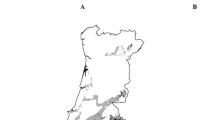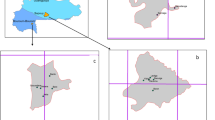Abstract
There is a need to accurately estimate the carbon sequestration potential of many of our agricultural and horticultural industries now that the Australian Government has introduced the Carbon Farming Initiative and is planning to introduce an emissions trading scheme in 2015. This study estimates that the carbon sequestration of macadamia plantations is around 3t CO2e/ha/yr, and provides a methodology to assess the carbon footprint of the Australian Macadamia Industry. This study attempts to estimate the growth rate, and subsequently the sequestration rate of plantation grown Macadamia spp. through regression analysis of stem characteristics of destructively sampled Macadamia integrifolia var. 344. A volume increment curve was also derived using three common genetic varieties (A4, A16 & A42). This curve is used to extrapolate a carbon sequestration rate for the national macadamia plantation estate. Once volume estimates and sequestration rates are determined, an economic benefit of the carbon sequestration can be estimated by auditing the amount of carbon produced by activities such as “on farm” fuel use, fuel used in transport, and energy used in producing the product. In this way, a life cycle carbon budget can be developed that will aid the sustainable development of the macadamia and horticultural industries in Australia through the production of carbon credits from the carbon stored in the trees.





Similar content being viewed by others
References
Australia’s National Greenhouse Accounts (2009) National Greenhouse Gas Inventory accounting for the KYOTO target May 2009. Pub. Department of Climate Change. ISBN: 978-1-921298-42-4
Australian Bureau of Statistics (ABS) (2008) Agricultural commodities Australia. No. 7121. Australian Bureau of Statistics, Canberra
Australian Greenhouse Office (AGO) (2002) Field measurement procedures for carbon accounting. Australian Greenhouse Office, Canberra
Australian Macadamia Society (AMS) (2008) Australian Macadamia Society Macadamia Farm Census. Australian Macadamia Society, Lismore
Bootle KR (1998) Wood in Australia. McGraw Hill, Roseville
Commonwealth of Australia (2008) Carbon pollution reduction scheme: green paper. Australian Government, Canberra
Dimitriadis E (2005) Proteaceae—the forgotten Aussie oaks. Agroforestry news. University of Melbourne, Tatura
FAR (2005) The Australian Macadamia industry. Industry note, food & agribusiness research—horticulture Australia
Firth DJ, Whalley RDB et al (2003) Distribution and density of the root system of macadamia on krasnozem soil and some effects of legume groundcovers on fibrous root density. Aust J Exp Agric 43(5):503–514
Gifford RM (2000) Carbon contents of above-ground tissues of forest and woodland trees. Australian Greenhouse Office, Canberra
Harden GJ, Hardin DW et al (2000) Proteaceae of NSW. UNSW Press, Sydney
Husch BT, Beers W et al (2002). Forest mensuration. Wiley
Hyams D (2005) Curve expert. Available at http://userpages.xfoneusa.net/~dhyams/cmain.htm
Ilic J, Boland D et al (2000) Wood density phase one—state of knowledge. Australian Greenhouse Office, Canberra
IPCC (2007) Climate change 2007. Synthesis report. Contribution of working groups I, II and III to the fourth assessment
Keith H, Barett D et al (2000) Review of allometric relationships for estimating woody biomass for New South Wales, the Australian Capital Territory, Victoria, Tasmania and South Australia. National Carbon Accounting System Technical Report No. 5B. Dept. Climate Change, Canberra
Montagnini F, Nair PKR (2004) Carbon sequestration: an underexploited environmental benefit of agroforestry systems. Agrofor Syst 61:281–295
Morand DT (1994) Soil landscapes of the Lismore-Ballina 1:100 000 sheet. Soil Conservation Service of NSW, Sydney
Murphy T, Jones GB, Leihn P, Vanclay J, James G, Glencross K (2008) Climate change and carbon trading: implications for the Macadamia industry. Conference proceedings of the Australian Macadamia Society, annual meeting, Ballina, October 2008, pp 27–30
NCCP (1998) “Macadamia integrifolia Maiden & Betche, & Macadamia tetraphylla L. Johnson.” Retrieved 2nd March, 2008, from http://www.hort.purdue.edu/newcrop/duke_energy/Macadamia.html
Olesen T, Roberton D, Muldoon S, Meyer R (2008) The role of carbohydrate reserves in evergreen tree development, with particular reference to macadamia. Sci Hortic 117:73–77
Olsen T (2011) Late 20th century warming in a coastal horticultural region and its effects on tree phenology. N Z J Crop Hortic Sci 39(2):119–129
Philip MS (1994) Measuring trees and forests. CABI, Wallingford
Specht A, McBeth B, Macgregor-Skinner J (2000) Measurement of carbon sequestration in small non-industrial forest plantations. Australian Greenhouse Challenge Project, Southern Cross University, 26 pp
Vanclay J (1994) Modelling forest growth and yield. CABI, Wallingford
West PW (2004) Tree and forest measurement. Springer, Berlin
Acknowledgments
This research has been greatly aided by help from Andrew Heap and Kim Jones (Australian Macadamia Society), Greg and Cliff James of Deenford Macadamia farm in the Northern Rivers region of NSW, and Peter Leihn from the NSW Greenhouse Gas Abatement Scheme/Green Power.
Author information
Authors and Affiliations
Corresponding author
Rights and permissions
About this article
Cite this article
Murphy, T., Jones, G., Vanclay, J. et al. Preliminary carbon sequestration modelling for the Australian macadamia industry. Agroforest Syst 87, 689–698 (2013). https://doi.org/10.1007/s10457-012-9589-2
Received:
Accepted:
Published:
Issue Date:
DOI: https://doi.org/10.1007/s10457-012-9589-2




